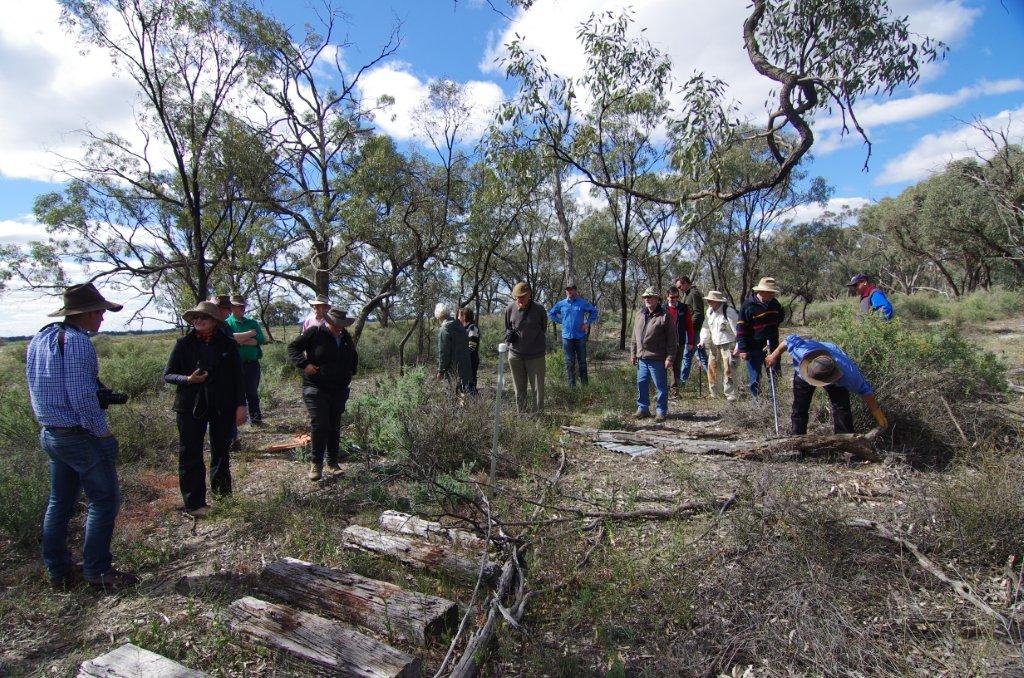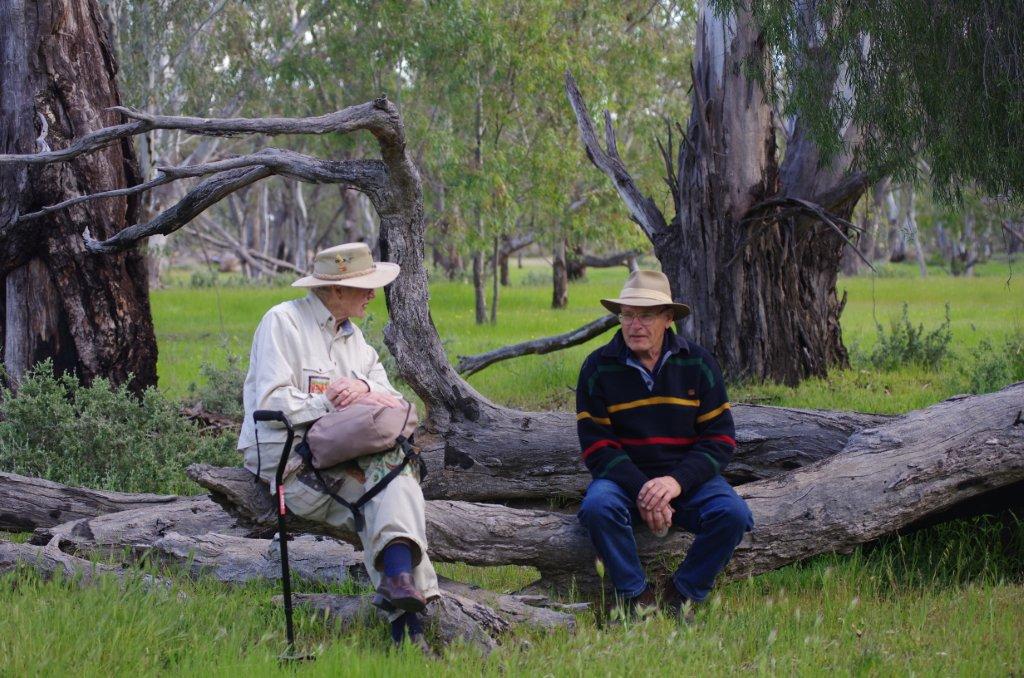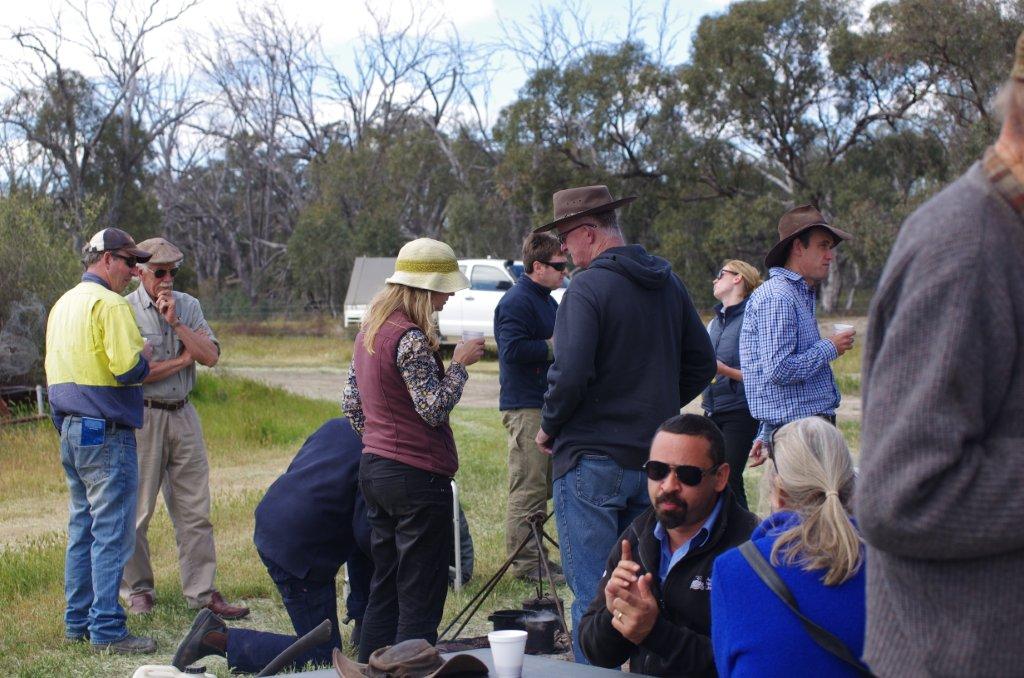|
A Western Murray Land Improvement Group initiative supported through funding from the Australian Government’s National Landcare Program and Murray Local Land Services. When: 18th September 2015 Where: ‘Ascot’, Moulamein NSW The Wildlife on Farms event looked at how food and fibre production systems can achieve environmental benefits. Scientists on the day explained how farmers can further enhance environmental outcomes on their farms by incorporating improved farm planning and management practices into their farm system. Mason Crane, a Senior Ecologist with The ANU outlined methods for protecting older hollow habitat trees and the importance of integrated pest management, such as fox control. Mason says, ‘it takes around 150 years to produce a suitable hollow in a tree…….. Incorporating more trees into the paddock landscape with these valuable old trees has proven to really assist with their long term chances of survival’ On the host farm, owner Peter Redfearn talked about his farming and wildlife conservation experiences including a very successful decade long, Bush Stone Curlew breeding program. Peter also recently fenced of a 1000 acre area for conservation purposes. As Damian says, ‘the way Peter integrates wildlife protection into the production system really is a good example of what this day is all about’. Damian Michael is a Senior Ecologist and Herpetologist with the Australian National University. He provided information on the reptile species composition and changes to abundance over the study period. Neil Bull from the Ricegrowers Association (RGA) gave a broad overview of rice farming in the Murray Valley - water use, productivity, economic and environmental considerations. Matt Herring gave an overview of research being conducted on irrigation farms including the widely popular Bitterns on Rice program. Matt discussed integrated water management projects for biodiversity and food production in the Murray-Darling Basin, such as incorporating wildlife friendly water storage designs into farms. ‘90% to 95% of wetland landscapes are on private land, so we are really not tapping into that conservation potential’. Matt said ‘that my best (survey) results by far for the species that I am most interested in like these threatened water birds and frogs are coming from agricultural crops’. The focus of today is all about win-wins, about agriculture and conservation working together. The idea of delivering environmental water for nature conservation outcomes where you might get a grazing benefit as well. ‘The Australasian Bittern is a perfect example it is globally endangered and you are looking at a bird with only about 2,500 individuals left. Our survey last year showed that in about 67,000 hectares of rice you are looking at a population of between 500 and 1000 bitterns. ‘So these rice crops support the world’s largest known breeding population of one of the world’s most threatened water birds. It’s really quite incredible and but the Bitterns are just the beginning in many ways’. Matt finished by saying that ‘it’s quite ironic that a lot of the water saving measures, can be really bad news for wildlife. The presentations were followed by a farm nature walk and afternoon tea on the banks of the Murrain Yarrein Creek which is currently receiving an allocation of environmental water. Over 30 people attended the day, keen to hear the results of long term on farm wildlife research in the Murray catchment from scientists and farmer experiences. The Western Murray Land Improvement Group would like to thank the Moulamein Mens Shed for a great BBQ lunch, the many volunteers who helped on the day and local poet Tammy Muir who chaired the event and provided some entertaining poetry between presentations. Highly recommend take a look at this clip (click on link). https://www.dropbox.com/s/brzd4adq5eoh37i/SRI.mp4?dl=0 Lloyd Polkinghorne's Irrigation Moulamein Property and the conservation values of irrigation. Here are some links about enhancing farm dams (if links don't work copy and paste into your browser): http://www.irrigationfutures.org.au/imagesDB/news/WebReady-casestudies.pdf http://www.irrigationfutures.org.au/imagesdb/news/webreadyprinciples.pdf http://www.murraywildlife.com.au/wp-content/uploads/2013/06/Wah-Wah-Water-for-Wildlife-MANAGEMENT-GUIDE.pdf Presentations: Matt Herring and Neil Bull
0 Comments
Your comment will be posted after it is approved.
Leave a Reply. |
AuthorVarious Contributors Archives
May 2018
Categories |
Contact usa: 27 Thule Street Barham NSW 2732
p. PO Box 90 Barham NSW 2732 e. [email protected] ph: 03 5453 1577 |
|







 RSS Feed
RSS Feed